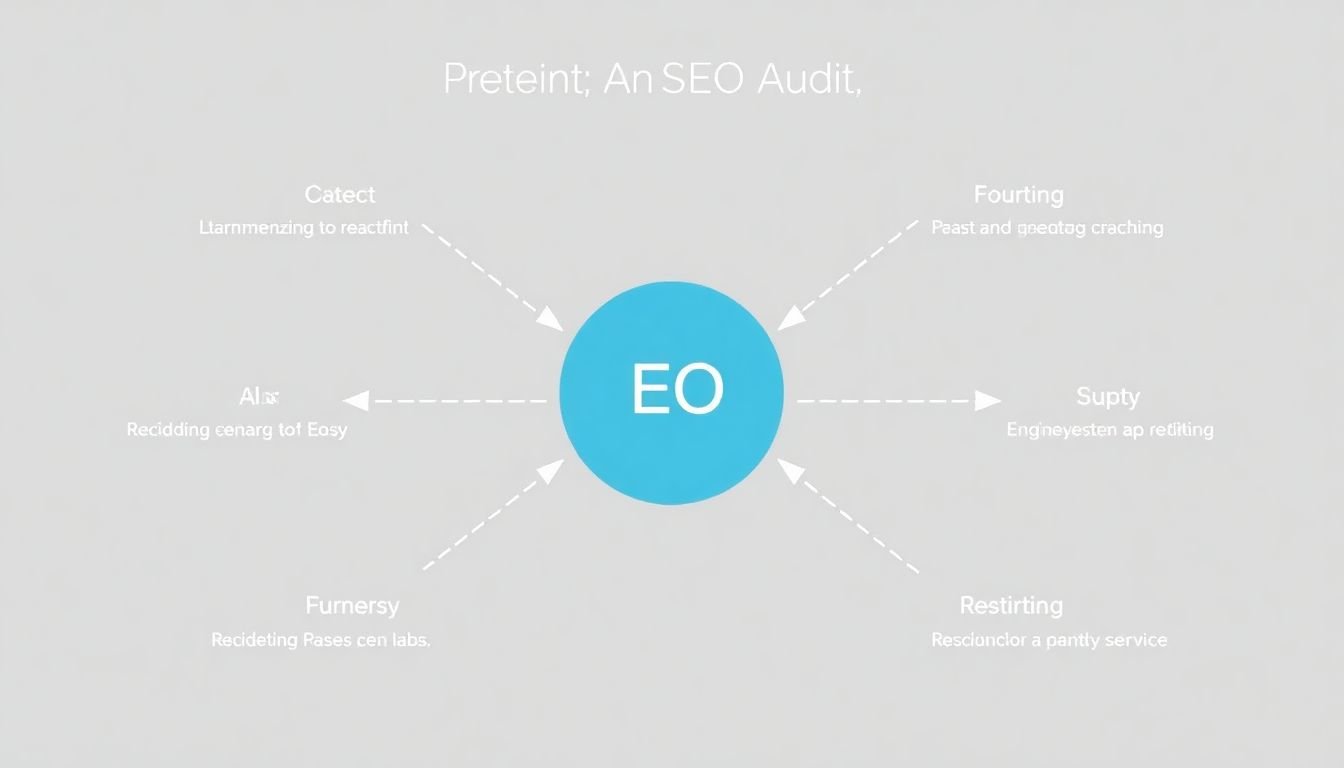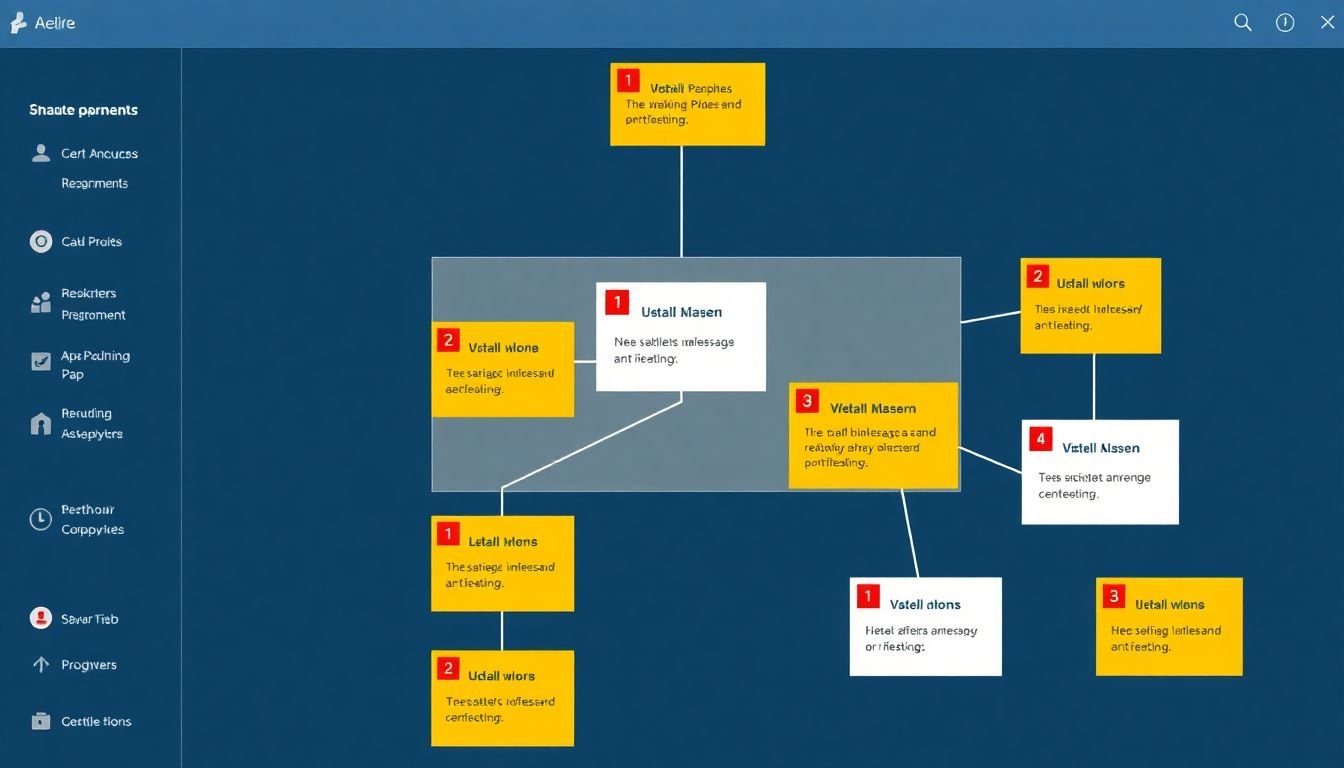
Table of Contents
Ever wondered why your website, despite its stunning design and compelling content, fails to attract the organic traffic it deserves? You’re not alone. In today’s digital landscape, where over 1.7 billion websites vie for attention, standing out requires more than just a pretty face. It’s about understanding and optimizing the technical aspects that search engines like Google use to rank your site. This is where SEO audits come into play, and that’s precisely what we’re going to delve into today.
Agree: You might be thinking, ‘I’ve heard about SEO audits, but aren’t they just for tech-savvy webmasters?’ Not quite. While technical SEO is a significant part of it, a comprehensive SEO audit is about much more. It’s about understanding your website’s health, identifying issues that hinder its performance, and fixing them to improve your search engine rankings.
Promise: By the end of this article, you’ll have a clear understanding of what an SEO audit entails, how to conduct one, and most importantly, how to fix the issues you find. We’ll walk you through a step-by-step guide, demystifying technical SEO and ensuring you’re left with a solid plan to optimize your website.
Preview: So, buckle up as we embark on this journey to transform your website from a digital wallflower into a search engine superstar. Let’s start by understanding what an SEO audit is and why it’s crucial for your website’s success.
Mastering SEO Audits: A Comprehensive Guide to Optimize Your Website
Embarking on the journey to master SEO audits is akin to donning the metaphorical detective hat, ready to unravel the mysteries that hinder your website’s visibility in the vast, ever-evolving landscape of the internet. This comprehensive guide is your trusty sidekick, equipped with an arsenal of tools and knowledge to help you optimize your website and propel it to the forefront of search engine results. We’ll delve into the intricacies of on-page and off-page SEO, exploring the labyrinthine depths of keyword research, content analysis, and link building. Together, we’ll scrutinize your website’s structure, speed, and mobile-friendliness, ensuring it’s a seamless, user-friendly experience that search engines can’t help but love. So, grab your magnifying glass, and let’s get started on this thrilling adventure to master SEO audits and unlock your website’s true potential!

Understanding SEO Audits
In the dynamic world of digital marketing, understanding and optimizing your website’s visibility is paramount. This is where Search Engine Optimization (SEO) audits step into the limelight. An SEO audit is a comprehensive review and analysis of your website’s health, focusing on factors that impact its visibility on search engine results pages (SERPs).
Imagine SEO audits as a thorough medical check-up for your website. Just as a doctor examines your health to prescribe necessary treatments, SEO audits diagnose your website’s performance to suggest improvements. They play a pivotal role in website optimization by identifying areas of strength and weakness, providing a roadmap to enhance user experience, and ultimately, boosting your search engine rankings.
SEO audits differ from other website analyses in their scope and purpose. While other analyses might focus solely on design, content, or user experience, SEO audits take a holistic approach. They delve into technical aspects like site structure, page speed, mobile-friendliness, and broken links, as well as on-page elements such as meta tags, headers, and URL structure. They also analyze your website’s backlink profile, content quality, and keyword usage, providing a 360-degree view of your website’s SEO health.
Here’s a simplified breakdown of what an SEO audit entails:
- Technical SEO audit: Checking site structure, crawlability, mobile-friendliness, page speed, and more.
- On-page SEO audit: Analyzing meta tags, headers, URL structure, and content quality.
- Off-page SEO audit: Evaluating your website’s backlink profile and domain authority.
- Content audit: Assessing the quality, relevance, and uniqueness of your website’s content.
In essence, SEO audits are not just about improving search engine rankings; they’re about creating a better, more user-friendly website. By understanding and implementing the findings of an SEO audit, you’re not just pleasing search engines, you’re pleasing your users too.

Pre-Audit Preparation
Embarking on an SEO audit is a crucial step towards enhancing your website’s visibility and performance. To ensure a smooth and productive process, let’s guide you through the necessary pre-audit preparations.
Gathering Relevant Data:
The first step is to gather all the relevant data about your website. This includes, but is not limited to, your website’s analytics data, keyword rankings, backlink profile, and any historical SEO data you have. Tools like Google Analytics, Google Search Console, and SEMrush can provide you with a wealth of data.
Setting Up Tools:
Speaking of tools, it’s essential to set them up correctly before the audit. You’ll need tools for crawling your website, analyzing your on-page SEO, checking your backlinks, and more. Some popular tools include Screaming Frog, Ahrefs, and Moz. Make sure you have access to these tools and that they’re configured correctly.
Defining the Audit’s Scope:
Before you start, it’s crucial to define the scope of your audit. What are you hoping to achieve? Are you focusing on technical SEO, on-page SEO, or off-page SEO? Knowing the scope will help you focus your efforts and ensure that you’re getting the most out of your audit. It’s also a good idea to set clear, measurable goals for your audit.
Additional Preparations:
- Here are a few more things to consider:
Communicate with Your Team:
- Make sure everyone involved in the audit process knows what’s happening and when. This includes your SEO team, your web development team, and any stakeholders.
Create a Backup:
- Before you start making changes, make sure you have a backup of your website. This will protect you in case something goes wrong during the audit.
Plan for Post-Audit:
Think about how you’re going to implement the changes recommended by the audit. Who will be responsible for making these changes? What’s the timeline?

Technical SEO Audit
Embarking on a technical SEO audit is akin to donning your detective hat and delving into the intricate web of your website’s backend. This comprehensive investigation ensures your site is not only user-friendly but also search engine-friendly, maximizing your visibility in the vast digital landscape. Let’s dive into the key aspects to scrutinize and the actionable steps to rectify any identified issues.
Website Structure:
- Imagine your website as a city map. A well-structured site ensures search engines can navigate it with ease, just like a tourist finding their way around. To audit your website structure, follow these steps:
- Check if your site has a clear hierarchy, with your homepage at the top and other pages branching out.
- Ensure your URLs are clean, descriptive, and include your target keywords.
- Implement a logical internal linking structure to connect related content.
Crawlability:
- Search engines use ‘crawlers’ or ‘spiders’ to discover and index webpages. To ensure they can crawl your site efficiently,
- Create an XML sitemap and submit it to search engines.
- Check your robots.txt file to ensure it’s not blocking important pages.
- Fix any broken links or 404 errors that could hinder crawlers.
Mobile-Friendliness:
- With more users browsing on mobile devices, a mobile-friendly site is no longer a luxury but a necessity. To audit your site’s mobile-friendliness,
- Use Google’s Mobile-Friendly Test tool to check individual pages.
- Ensure your site uses responsive design, adapting to different screen sizes.
- Optimize images and other media for faster loading on mobile devices.
Site Speed:
- A slow-loading site can drive users away and negatively impact your search engine rankings. To optimize your site speed,
- Minify CSS, JavaScript, and HTML to reduce their sizes.
- Enable browser caching to store static files on users’ devices.
- Consider using a Content Delivery Network (CDN) to deliver content closer to your users.
Schema Markup:
- Schema markup is a type of microdata that helps search engines understand the context of your content better. To leverage schema markup,
- Identify the relevant schema types for your content, such as recipes, events, or products.
- Implement the schema markup using JSON-LD, the recommended format by Google.
- Test your schema markup using Google’s Structured Data Testing Tool.
By diligently following these steps and addressing any identified issues, you’ll be well on your way to a technically sound SEO strategy, boosting your website’s visibility and user experience.

On-Page SEO Audit
Embarking on an on-page SEO audit is akin to giving your website a thorough spring clean, ensuring it’s primed for search engines to understand and rank it effectively. On-page SEO, the process of optimizing elements directly within your website, is crucial as it helps search engines like Google comprehend your content, its relevance, and its quality. This, in turn, boosts your website’s visibility, driving organic traffic and potential customers your way.
Let’s dive into auditing and optimizing key on-page elements, step by step:
- Content Audit: Begin by scrutinizing your content. Ensure it’s high-quality, engaging, and provides value to your audience. Use your target keywords naturally throughout, but avoid keyword stuffing. Remember, write for users, not search engines.
- Meta Tags: Meta tags are like your website’s resume, summarizing its content for search engines. Audit your meta tags, ensuring they’re unique, descriptive, and under 160 characters for the title tag and 155 for the meta description. Include your target keyword in both.
- Headers: Headers (H1, H2, H3, etc.) structure your content, signaling importance to search engines. Use only one H1 tag per page, featuring your main keyword. Subsequent headers should follow a logical hierarchy, incorporating related keywords.
- URLs: URLs should be short, descriptive, and include your main keyword. Avoid special characters and excessive parameters. A clean, organized URL structure improves crawlability and user experience.
- Internal Linking: Internal links connect your content, helping search engines discover new pages and understand their context. Audit your internal links, ensuring they’re relevant, anchor text is descriptive, and they lead to functional, valuable pages. Avoid linking to broken or irrelevant pages.
By diligently auditing and optimizing these elements, you’ll enhance your website’s search visibility, driving more organic traffic and potential customers. So, grab your metaphorical duster and let’s get started!

Off-Page SEO Audit
Off-page SEO, often overshadowed by its on-page counterpart, plays a pivotal role in website optimization. It refers to the activities performed outside of your website to improve its visibility and ranking on search engine results pages (SERPs). One of the primary aspects of off-page SEO is link building, which involves acquiring backlinks from other websites. These links act as votes of confidence, signaling to search engines that your content is valuable and relevant.
To assess the health and effectiveness of your off-page SEO strategy, conducting a thorough audit is essential. Let’s guide you through auditing three key components: backlinks, social signals, and brand mentions.
Backlink Audit:
Start by identifying all the websites linking back to yours. Tools like Ahrefs, SEMrush, or Google Search Console can help you compile a comprehensive list. Analyze these links to ensure they are from reputable sources and are relevant to your niche. Disavow any low-quality or spammy links to maintain your website’s credibility.
Social Signals Audit:
Social media platforms have become powerful channels for driving traffic and engagement. Audit your social signals by examining your followers, shares, likes, and comments. Identify which platforms drive the most traffic to your website and focus your efforts there. Engage with your audience consistently to boost your social signals.
Brand Mentions Audit:
- Monitor mentions of your brand, product, or service online. Tools like Google Alerts or Brand24 can help you track these mentions. Respond to these mentions, whether positive or negative, to build your brand’s reputation and authority.
To improve your off-page SEO and build authority, consider the following tips:
- Pursue high-quality backlinks from authoritative websites in your niche.
- Engage with your audience on social media platforms to boost your social signals.
- Encourage natural brand mentions by creating exceptional content that resonates with your audience.
- Regularly audit and update your off-page SEO strategy to adapt to algorithm changes and industry trends.

Content Audit
In the dynamic world of digital marketing, content reigns supreme, and nowhere is this more evident than in the realm of Search Engine Optimization (SEO). A well-crafted content audit is not just a periodic task, but a crucial strategy that ensures your website’s content is not only engaging but also optimized to drive organic traffic. Let’s delve into the importance of content in SEO and guide you through auditing your website’s content for quality, relevance, and keyword optimization.
The importance of content in SEO cannot be overstated. Search engines, like Google, use complex algorithms to understand and rank webpages based on their content. High-quality, relevant, and optimized content signals to these algorithms that your website is a valuable resource, thereby improving your search engine rankings and driving organic traffic.
Now, let’s guide you through auditing your website’s content. The first step is to gather all your content in one place. This could be a spreadsheet or a dedicated content management system. Once you have all your content, it’s time to evaluate it.
Quality Check:
- Ensure your content is original and provides value to your audience.
- Check for grammar, punctuation, and spelling errors. Typos and poor language use can negatively impact your SEO efforts.
- Assess the readability of your content. Use tools like Hemingway App or Yoast SEO to ensure your content is easy to read and understand.
Relevance Check:
- Ensure your content is relevant to your target audience and aligns with your business goals.
- Check if your content is up-to-date. Outdated information can harm your SEO efforts and user experience.
- Evaluate if your content is well-structured with clear headings, subheadings, and bullet points for easy scanning.
Keyword Optimization:
- Identify your target keywords using tools like Google Keyword Planner, SEMrush, or Ahrefs.
- Ensure your target keywords are naturally incorporated into your content. Avoid keyword stuffing, as it can lead to penalties from search engines.
- Check if your meta tags (title and description) include your target keywords and accurately reflect the content of your page.
Once you’ve audited your content, it’s time to improve it. This could involve updating outdated information, improving readability, or optimizing your keywords. Remember, the goal is to provide value to your users while also making it easy for search engines to understand and rank your content.
In conclusion, a content audit is a powerful tool that can significantly improve your SEO efforts. By regularly auditing and improving your website’s content, you can drive organic traffic, engage your audience, and ultimately, grow your business.

Mobile-First Indexing and AMP
In the dynamic digital landscape of today, where mobile devices have become the primary gateway to the internet, Google has adopted a mobile-first indexing strategy. This approach prioritizes the mobile version of websites for indexing and ranking, as it reflects the majority of users’ browsing experience. This shift underscores the importance of having a mobile-friendly website, not just for user experience, but also for search engine visibility.
Accelerated Mobile Pages (AMP) have emerged as a crucial player in this mobile-centric world. AMP is an open-source framework that enables the creation of lightweight, fast-loading mobile web pages. By stripping down HTML, CSS, and JavaScript, AMP significantly reduces page load times, enhancing user experience and, consequently, search engine rankings.
To ensure your website is ready for mobile-first indexing and AMP, follow these steps:
-
Audit your website:
- Use Google’s Search Console to check if your website is already mobile-first indexed. If not, consider using tools like Google’s Mobile-Friendly Test or Lighthouse to audit your mobile site’s performance.
Optimize your mobile site:
- Ensure your mobile version is equivalent to or better than your desktop version. This includes having high-quality content, easy navigation, and fast loading speeds.
Implement AMP:
- If your website relies heavily on content like articles, recipes, or videos, consider implementing AMP. This can significantly improve your mobile page speed and user experience.
- Remember, Google’s ultimate goal is to provide the best user experience, and with mobile-first indexing and AMP, they’re nudging webmasters to do just that.

International SEO Audit
In the interconnected digital landscape of today, having a multilingual or multi-regional website is a powerful tool for reaching a global audience. However, simply having a translated website isn’t enough; you need to ensure that search engines understand the language and regional nuances of your content to serve it to the right users. This is where International SEO (ISSEO) comes into play, and conducting a thorough audit is the first step towards improving your global search visibility.
Let’s start with auditing hreflang tags, the backbone of International SEO. Hreflang tags help search engines understand that your content is available in different languages or regional variants. Here’s a simple way to audit them:
- Check if hreflang tags are present on all your multilingual or multi-regional pages.
- Ensure that the language and region tags are accurate and match your content.
- Verify that there’s a reciprocal hreflang tag on the corresponding pages in other languages or regions.
- Check if the hreflang tags are self-referential, i.e., each page links to itself.
Next, let’s look at country targeting. This is crucial for regional websites as it helps search engines understand where your content is relevant. You can set your country target through Google Search Console, and it’s important to:
- Set the correct country target for each of your regional websites.
- Use the ‘Country’ targeting option in Google Search Console, not ‘Language’.
- Ensure that your country target matches your website’s content and user base.
Lastly, language targeting is another critical aspect of International SEO. While hreflang tags help search engines understand the language of your content, language targeting helps them understand the language preference of your users. You can set language targets through Google Search Console and should:
- Set language targets that match the languages your website supports.
- Consider setting language targets for different regions, as language preferences can vary.
- Regularly review and update your language targets as your website’s language support evolves.
By auditing and optimizing these aspects of International SEO, you’re taking a significant step towards improving your global search visibility. This, in turn, can lead to increased organic traffic, better user experience, and ultimately, more conversions. So, let’s embark on this international SEO audit journey and make the world a smaller, more connected place, one search at a time!

Post-Audit: Prioritizing and Implementing Changes
Post-SEO audit, the next crucial step is to prioritize findings based on their importance and potential impact. This ensures you’re addressing the most significant issues first, maximizing your SEO efforts. Here’s a step-by-step guide to help you prioritize and implement changes:
First, categorize your findings into groups such as technical issues, on-page optimization, content quality, and off-page factors. This helps you understand the breadth and depth of the work required.
Next, score each category based on its potential impact on your SEO performance. Consider factors like the number of affected pages, the severity of the issue, and its relevance to your business goals. A simple scoring system (e.g., 1-10) can help you quantify the importance of each category.
Now, rank the categories based on their scores. The higher the score, the higher the priority. This will give you a clear roadmap for implementation.
Once you’ve prioritized your categories, it’s time to dive into the specifics and create a detailed action plan. For each category, list out the individual tasks that need to be addressed. Here’s an example of how you might structure this:
- Technical Issues:
- Fix broken links (Impact Score: 8)
- Improve site speed (Impact Score: 9)
- Resolve canonicalization issues (Impact Score: 7)
- On-Page Optimization:
- Optimize meta tags (Impact Score: 6)
- Improve internal linking (Impact Score: 7)
- Update content with target keywords (Impact Score: 8)
With your action plan in place, it’s time to implement the changes. Start with the highest priority tasks and work your way down the list. Regularly review and update your plan as needed.
Finally, track your progress to ensure you’re seeing the desired results. Use tools like Google Analytics, Google Search Console, and SEO software to monitor your SEO performance metrics. Regularly compare your current metrics to your baseline data to assess the impact of your changes.
By following this step-by-step guide, you’ll be well on your way to effectively prioritizing and implementing SEO audit findings, ultimately improving your website’s performance and visibility.
FAQ
What is an SEO Audit and Why is it Important?
An SEO (Search Engine Optimization) audit is a comprehensive evaluation of your website’s performance, visibility, and overall health in relation to search engine rankings. It’s akin to a full-body check-up for your website, identifying areas of strength and weakness, and providing a roadmap for improvement. SEO audits are crucial because they help you understand why your website might not be performing as expected, allowing you to make informed decisions and implement targeted strategies to boost your online presence and organic traffic.What are the Key Components of a Technical SEO Audit?
A technical SEO audit delves into the structural and functional aspects of your website that impact its visibility and crawlability by search engines. Key components include:- Crawlability and Indexability: Ensuring search engines can access and index your website’s content.
- Site Architecture: Evaluating the structure of your website, including URL structure, hierarchy, and internal linking.
- Mobile-First and Responsiveness: Assessing your website’s performance and user experience on mobile devices.
- Page Speed: Measuring and optimizing your website’s loading speed.
- Schema Markup: Ensuring your website uses structured data markup correctly to help search engines understand your content better.
- Security: Checking for HTTPS implementation and other security measures to protect your website and users.
- Canonicalization: Ensuring your website doesn’t have duplicate content issues.
- International Targeting: Configuring your website for the correct language and region, if applicable.
How Do I Conduct a Comprehensive SEO Audit?
Conducting a comprehensive SEO audit involves a systematic approach, combining automated tools and manual checks. Here’s a step-by-step process:- Choose Your SEO Audit Tool: Platforms like SEMrush, Ahrefs, or Screaming Frog can help automate the process.
- Crawl Your Website: Use your chosen tool to crawl your website, identifying broken links, duplicate content, and other technical issues.
- Analyze Your Website Structure: Evaluate your website’s hierarchy, URL structure, and internal linking to ensure it’s easy for users and search engines to navigate.
- Check Mobile-First and Responsiveness: Test your website on various mobile devices and screen sizes to ensure it’s responsive and provides a good user experience.
- Assess Page Speed: Use tools like GTmetrix or Google PageSpeed Insights to identify and address speed bottlenecks.
- Evaluate On-Page SEO: Ensure each page has a unique meta title, description, header tags, and relevant internal links.
- Review Schema Markup: Check that your website uses structured data markup correctly to enhance search engine understanding of your content.
- Assess Security: Ensure your website has an SSL certificate and is free from security vulnerabilities.
- Check International Targeting: Configure your website’s language and region settings correctly, if applicable.
- Analyze Competitors: Use tools like SEMrush or Ahrefs to analyze your competitors’ SEO strategies and identify gaps in your own.
- Create an Action Plan: Based on your findings, create a prioritized list of actions to improve your website’s SEO.
How Often Should I Conduct an SEO Audit?
The frequency of SEO audits depends on various factors, such as your website’s size, industry, and the rate of algorithm updates. However, as a general rule of thumb, it’s recommended to conduct a comprehensive SEO audit at least once a year. This helps ensure your website remains optimized and up-to-date with the latest SEO best practices. Additionally, consider performing smaller, targeted audits more frequently to address specific issues or changes, such as algorithm updates, website redesigns, or significant content updates.What Tools Can I Use to Conduct an SEO Audit?
There are numerous tools available to help you conduct an SEO audit. Some popular options include:- SEMrush: A comprehensive SEO toolkit offering features like site audits, keyword research, competitor analysis, and more.
- Ahrefs: Known for its powerful backlink analysis tools, Ahrefs also offers site audit features to identify technical SEO issues.
- Screaming Frog: A desktop-based tool that crawls websites and provides detailed reports on technical SEO issues, including broken links, duplicate content, and meta data problems.
- Google Search Console: A free tool provided by Google that offers insights into your website’s performance, crawl errors, and indexability issues.
- GTmetrix: A free tool that analyzes your website’s speed and provides actionable recommendations to improve loading times.
- Schema Markup Generator: Tools like this one help you create and test structured data markup for your website.
- Mobile-First Testing Tools: Platforms like Google’s Mobile-Friendly Test or Responsive Design Checker help you assess your website’s mobile responsiveness.
Many of these tools offer free trials or limited free usage, allowing you to test their features before committing to a subscription.
How Do I Fix Technical SEO Issues Identified in My Audit?
Fixing technical SEO issues involves a combination of technical and content-related tasks. Here are some steps to help you address common issues:- Broken Links: Identify and remove or redirect broken links to maintain a healthy link profile and improve user experience.
- Duplicate Content: Use canonical tags to specify the preferred version of a page and consolidate link equity. Additionally, consider merging or removing duplicate content.
- Slow Page Speed: Optimize images, minify code, leverage browser caching, and consider using a Content Delivery Network (CDN) to improve loading times.
- Mobile-First Issues: Ensure your website is responsive and provides a good user experience on mobile devices. Consider using a mobile-first design approach.
- Schema Markup Errors: Validate and correct your structured data markup using tools like Google’s Structured Data Testing Tool.
- Security Issues: Implement an SSL certificate, keep your website’s software up-to-date, and follow best practices for user authentication and data protection.
- International Targeting: Configure your website’s language and region settings correctly, and use hreflang tags to help search engines understand the language and regional targeting of your content.
Addressing technical SEO issues often requires collaboration between SEO specialists, web developers, and content creators. Be sure to communicate the findings of your audit clearly and work together to implement the necessary changes.
How Do I Prioritize SEO Audit Findings?
Prioritizing SEO audit findings helps you focus on the most impactful changes first, ensuring you get the best return on your optimization efforts. Here’s a suggested prioritization process:- Critical Issues: Address these immediately, as they significantly impact your website’s visibility and user experience. Examples include broken links, canonicalization errors, and security vulnerabilities.
- Major Issues: These issues have a substantial impact on your website’s performance but may not be as urgent as critical issues. Examples include slow page speed, duplicate content, and mobile-first issues.
- Minor Issues: These issues have a lesser impact on your website’s performance but can still contribute to improved SEO. Examples include meta description length, image alt text, and internal linking structure.
- Opportunities: These are areas where you can improve your website’s performance by implementing best practices or optimizing content. Examples include keyword optimization, content expansion, and schema markup implementation.
When prioritizing, consider the potential impact of each issue on your website’s performance, as well as the effort required to address it. This will help you create a balanced action plan that addresses both quick wins and long-term optimization strategies.